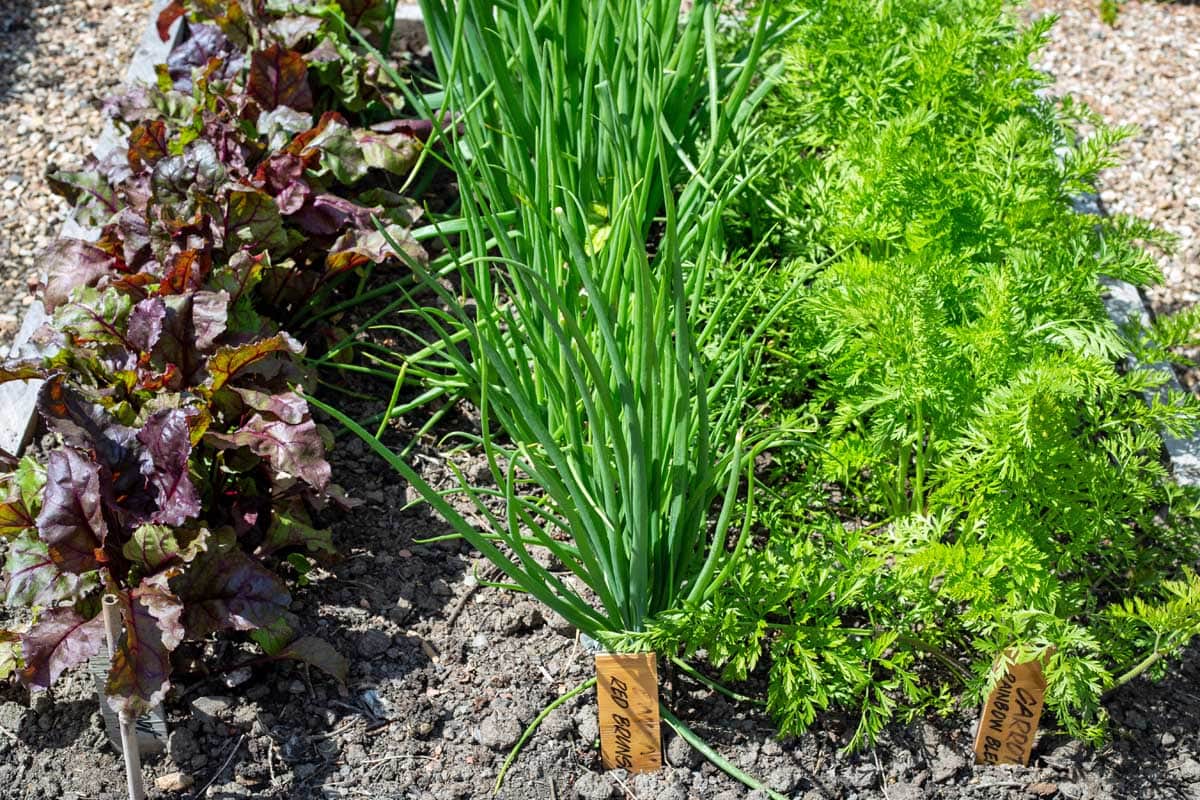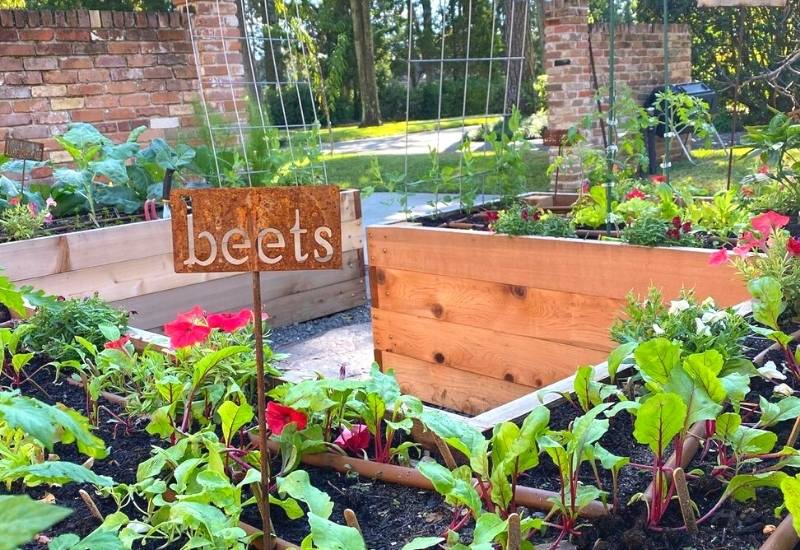The Ultimate Guide To Companion Planting With Beets
The Ultimate Guide to Companion Planting with Beets
Beets are a delicious and nutritious root vegetable that can be grown in most gardens. They are relatively easy to care for, but they can benefit from companion planting. Companion planting is the practice of planting certain plants together to encourage beneficial interactions between them. By planting beets with the right companion plants, you can improve their growth, deter pests, and boost their yields.
In this guide, we will discuss the best companion plants for beets, as well as some plants that should be avoided. We will also provide tips on how to plant and care for beets in your garden.
Benefits of Companion Planting with Beets
There are many benefits to companion planting with beets. Some of the most important benefits include:
- Improved growth: Companion plants can help to improve the growth of beets by providing them with nutrients, shade, or support. For example, beans can help to fix nitrogen in the soil, which can benefit beets.
- Deterrent to pests: Some companion plants can help to deter pests from beets. For example, marigolds can help to repel aphids and other insects.
- Increased yields: Companion planting can help to increase the yields of beets. For example, cabbage can help to protect beets from root maggots, which can damage the roots and reduce yields.
Best Companion Plants for Beets
The following are some of the best companion plants for beets:
- Alliums: Alliums, such as onions, garlic, and chives, can help to repel pests and improve the flavor of beets.
- Brassicas: Brassicas, such as broccoli, cabbage, and cauliflower, can help to attract beneficial insects and improve the soil quality.
- Legumes: Legumes, such as beans, peas, and lentils, can help to fix nitrogen in the soil, which can benefit beets.
- Herbs: Herbs, such as mint, thyme, and dill, can help to deter pests and improve the flavor of beets.
- Flowers: Flowers, such as marigolds and nasturtiums, can help to attract beneficial insects and deter pests.
Plants to Avoid Planting Near Beets
The following are some plants that should be avoided planting near beets:
- Carrots: Carrots and beets are both members of the chenopodiaceae family, and they can cross-pollinate. This can result in carrots with a bitter taste.
- Pole beans: Pole beans can shade beets, which can stunt their growth.
- Sunflowers: Sunflowers can compete with beets for water and nutrients.
- Melons: Melons can attract pests that can also damage beets.
- Cucurbits: Cucurbits, such as cucumbers, squash, and pumpkins, can attract pests that can also damage beets.
How to Plant and Care for Beets
Beets are relatively easy to plant and care for. They can be planted in the spring or fall, and they prefer full sun. Beets need well-drained soil, and they should be watered regularly, especially during hot weather.
To plant beets, sow the seeds about 1/2 inch deep and 2 inches apart. Beets can be thinned once they have a few sets of leaves. Beets are ready to harvest when the roots are about 2 inches in diameter.
Conclusion
By planting beets with the right companion plants, you can improve their growth, deter pests, and boost their yields. By following the tips in this guide, you can successfully grow beets in your garden and enjoy their delicious and nutritious roots.
Beets are a delicious and nutritious root vegetable that is easy to grow in the garden. But did you know that there are certain companion plants that can help your beets thrive?
Some of the best companion plants for beets include:
- Alliums: Alliums, such as onions, garlic, and chives, help to repel pests and diseases that can damage beets. They also add nitrogen to the soil, which helps beets to grow strong and healthy.
- Brassicas: Brassicas, such as broccoli, Brussels sprouts, and cabbage, help to attract beneficial insects that can help to control pests. They also help to suppress weeds, which can compete with beets for resources.
- Legumes: Legumes, such as beans and peas, fix nitrogen in the soil, which can benefit beets and other plants in the garden. They also help to improve soil drainage, which is important for beets.
If you're looking to improve the growth and health of your beets, consider planting some of these companion plants alongside them. For more information about companion planting with beets, visit Garden Wiki.
FAQ of companion plants with beets
What are the best companion plants for beets?
Some of the best companion plants for beets include:
- Onions, garlic, and other members of the Allium family: These plants have a strong scent that can deter pests, such as aphids and flea beetles, that can damage beets.
- Lettuce: Lettuce is a cool-season crop that grows well in the same conditions as beets. It also has shallow roots, so it won't compete with beets for water and nutrients.
- Bush beans: Bush beans are nitrogen-fixing plants, which means they can help to improve the soil quality for beets. They also provide shade for beet leaves, which can help to prevent them from bolting (flowering prematurely).
- Radishes: Radishes are another cool-season crop that grows quickly. They can be harvested before they start to compete with beets for space.
- Strong-scented herbs: Herbs such as chives, rosemary, and sage have a strong scent that can deter pests. They can also help to attract beneficial insects, such as ladybugs and hoverflies, which can help to control pests.
What are some plants that should not be planted near beets?
Some plants that should not be planted near beets include:
- Spinach: Spinach and beets compete for the same nutrients, so planting them together can stunt their growth.
- Cucumbers: Cucumbers have shallow roots that can damage beet roots.
- Pole beans: Pole beans need a lot of space to grow, and they can shade out beet plants.
- Tomatoes: Tomatoes and beets have different nutrient requirements, so planting them together can lead to nutrient deficiencies in both plants.
- Melons: Melons and beets have different water requirements, so planting them together can lead to waterlogged soil or drought stress.
How do companion plantings benefit beets?
Companion plantings can benefit beets in a number of ways, including:
- Attracting beneficial insects: Some companion plants, such as chives and rosemary, attract beneficial insects, such as ladybugs and hoverflies, which can help to control pests.
- Repelling pests: Some companion plants, such as onions and garlic, have a strong scent that can deter pests, such as aphids and flea beetles.
- Improving soil quality: Some companion plants, such as legumes, are nitrogen-fixing plants, which means they can help to improve the soil quality for beets.
- Providing shade: Some companion plants, such as lettuce, can provide shade for beet leaves, which can help to prevent them from bolting (flowering prematurely).
- Distracting pests: Some companion plants, such as nasturtiums, are attractive to pests, which can help to distract them from beet plants.
How far apart should beets be planted?
Beet plants should be spaced about 2-3 inches apart. This will give them enough room to grow and develop their roots.
Image of companion plants with beets
5 images of companion plants with beets from Pinterest:
- Carrots: Carrots and beets are both root vegetables that can be grown together. They help to deter pests from each other and can also help to improve the flavor of each other's roots.

- Cabbage: Cabbage is another member of the Brassica family that can be grown well with beets. They help to repel pests from each other and can also help to improve the flavor of each other's leaves.

- Lettuce: Lettuce is a leafy green that can be grown well with beets. They help to shade the beet roots from the sun, which can help to prevent them from getting sunburned.

- Onions: Onions are another type of Allium that can be grown well with beets. They help to repel pests from each other and can also help to improve the flavor of each other's bulbs.
- Radishes: Radishes are a quick-growing root vegetable that can be grown well with beets. They help to loosen the soil, which can benefit the beet roots.

Post a Comment for "The Ultimate Guide To Companion Planting With Beets"